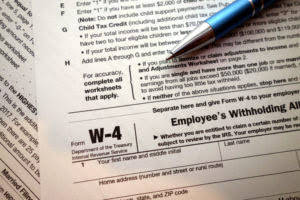Content

Our team of reviewers are established professionals with decades of experience in areas of personal finance and hold many advanced degrees and certifications. The articles and research support materials available on this site are educational and are not intended to be investment or tax advice. All such information is provided solely for convenience purposes only and all users thereof should be guided accordingly.
LiabilitiesLiabilities are the claims of others against the business. Like an asset, a liability may be changed from transactions of a business. This transaction brings cash into the business and also creates a new liability called bank loan.
Accounting Equation FAQs
Leases can’t make it on this list because they’re not technically owned by the company. Double-entry accounting is a way to keep track of your business’s finances by tracking every transaction that happens. This means if you buy something for $500, and it shows up as an asset on one side of the equation, then there must also be a liability or equity account https://www.bookstime.com/articles/the-accounting-equation-may-be-expressed-as entry with equal value. For example, when buying commercial property using loans from lenders like banks – both sides should increase because they’re related transactions. However, understanding how all these numbers work together will help you understand your financial health. It will also empower you to make smarter decisions about what comes next.
These may include loans, accounts payable, mortgages, deferred revenues, bond issues, warranties, and accrued expenses. Although the balance sheet always balances out, the accounting equation can’t tell investors how well a company is performing. Stockholder’s equity refers to the owner’s (stockholders’) investments in the business and earnings. These two components are contributed capital and retained earnings. Every transaction of a business, regardless of its complexity, has its effect on the accounting equation. A business transaction may bring a change in all or any of the components of the equation.
Share This Book
In accounting, every business transactions involve double effects of equal value. The accounting equation shows the relationship between the economic resources belonging to the business and the claims against these resources. Since the balance sheet is founded on the principles of the accounting equation, this equation can also be said to be responsible for estimating the net worth of an entire company. The fundamental components of the accounting equation include the calculation of both company holdings and company debts; thus, it allows owners to gauge the total value of a firm’s assets. A company’s quarterly and annual reports are basically derived directly from the accounting equations used in bookkeeping practices.
This is important for keeping track of changes made to accounts over time, ensuring entries are derived correctly, and modeling as well analyse account balances. Additionally, you can use your cover letter to detail other experiences you have using the equation. For example, you can talk about how you checked that the books were balanced for a friend or family member’s small business. And we find that the numbers do balance, meaning Apple has been reporting transactions accurately, and its double-entry system is working. Working capital indicates whether a company will have the amount of money needed to pay its bills and other obligations when due. The Liabilities refer to an amount owing by one person to another payable in money, goods or services.
Smart Ways to Spend Your Tax Refund and Grow Your Business
Here are four practical examples of how the accounting equation works in a double-entry system. This number is the sum of total earnings that were not paid to shareholders as dividends. This is the total value https://www.bookstime.com/ of an organisation that is expressed as dollars. It is essentially the amount that a company must be left with when that company has liquidated every asset that it owns and has cleared its dues or debts.
How are debits and credits represented in the accounting equation?
A + Ex = E + L + I. In this form, increases to the amount of accounts on the left-hand side of the equation are recorded as debits, and decreases as credits. Conversely for accounts on the right-hand side, increases to the amount of accounts are recorded as credits to the account, and decreases as debits.
Whatever may be the change i.e. increase or decrease, the accounting equation remains in balance. One of the main benefits of using the accounting equation is the fact that it provides an easy way to verify the accuracy of your bookkeeping. This may indicate that you aren’t managing your money very well. On the other hand, if the equation balances, it is a good indication that your finances are on the right track. If a business buys raw materials and pays in cash, it will result in an increase in the company’s inventory (an asset) while reducing cash capital (another asset).
What is the accounting equation?
As a small business, your purchases are funded by either capital or debt. For example, a company uses $400 worth of utilities in May but is not billed for the usage, or asked to pay for the usage, until June. Even though the company does not have to pay the bill until June, the company owed money for the usage that occurred in May. Therefore, the company must record the usage of electricity, as well as the liability to pay the utility bill, in May. As the fintech industry continues to expand, memorizing accounting equations will become obsolete.

Responses should be able to evaluate the benefit of investing in college is the wage differential between earnings with and without a college degree. One is to consider equity as any assets left over after deducting all liabilities. In fact, the equation for determining how much equity a company has is subtracting the company’s liabilities from its assets. Assets typically hold positive economic value and can be liquified (turned into cash) in the future. However, some assets are less liquid than others, making them harder to convert to cash.
